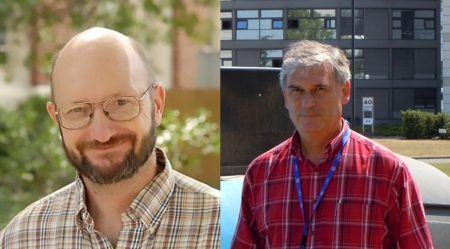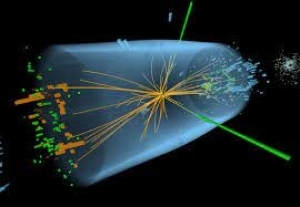NORMAN, OKLA. – Located on the border between France and Switzerland is a laboratory operated by CERN and the location of a 17-mile (27-kilometre) ring underground, the Large Hadron Collider. This site is where University of Oklahoma physicists Phillip Gutierrez and Howard Baer carry out their work, now supported by a nearly $1.7 million grant from the Department of Energy.
“The College of Arts and Sciences congratulates Phil Gutierrez, chair of the Homer L. Dodge Department of Physics and Astronomy, George Lynn Cross Professor Howard Baer, and their larger team of high energy physicists in the department, including professors Brad Abbott, Mike Strauss, John Stupak and Kuver Sinha, and professor emeritus Pat Skubic, on this prestigious award from the Department of Energy,” said David Wrobel, dean of the College of Arts and Sciences. “The team’s work to develop a quantum theory of gravity through superstring theory is an exciting example of the large-scale research being undertaken at the famous CERN lab’s Large Hadron Collider and it is wonderful to see our faculty at the center of this international initiative.”
Gutierrez and Baer are the co-principle investigators on this grant and their research team is additionally supported by several postdoctoral researchers and both graduate and undergraduate student researchers.
“Our present understanding of the laws of physics is based on quantum mechanics and Einstein’s theory of relativity,” Baer said. “That understanding works very well at present for what we call electromagnetism and the two types of nuclear forces – strong and weak, but it doesn’t work as easily for gravity. In order to have a quantum theory of gravity, you have to move to what is called superstring theory. …One of the main goals of the Large Hadron Collider is to detect new states of matter which would usher in a view toward a deeper level of unification of both gravity and the electromagnetic and nuclear forces that we know about today.”
“About nine years ago a particle called the Higgs boson was discovered that had been postulated 40 years earlier,” he added. “It was only once the Large Hadron Collider started functioning that you could really dig out the signal of this Higgs boson. That carries with it a lot of mysteries itself. So physicists are really trying to focus and measure every possible property of the Higgs particle and it is expected that the Higgs boson is intimately linked with supersymmetric matter states.”



